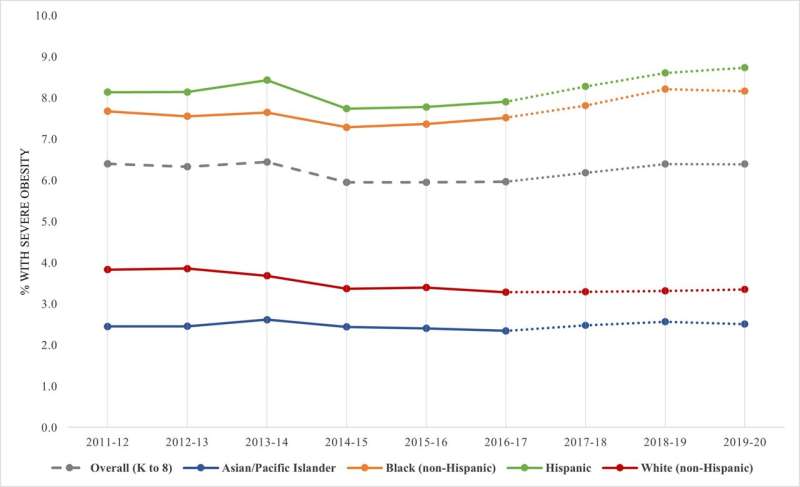This article has been reviewed according to Science X's editorial process and policies. Editors have highlighted the following attributes while ensuring the content's credibility:
fact-checked
peer-reviewed publication
trusted source
proofread
Racial disparities in childhood obesity on the rise in study of NYC public schools

Among public school students in New York City, some of the greatest increases in childhood obesity in recent years were among those socioeconomic and demographic groups already bearing the greatest burden of obesity, including Black and Hispanic students and youth living in poverty.
That is the conclusion of a new study published this week in the open-access journal PLOS ONE by Emily D'Agostino of Duke University, U.S., and colleagues.
Childhood obesity is a major public health concern associated with chronic health conditions and adverse mental health outcomes into adulthood. In the new study, researchers analyzed height, weight and socioeconomic and demographic data on 1.37 million unique students in the New York City public school system aged 5 to 15 from school years 2011–2012 through 2019–2020.
Among a study sample representative of more than 600,000 youth in the school year 2019–20, 20.9% had obesity and 6.4% had severe obesity. Overall, rates of obesity and severe obesity decreased slightly between 2011–12 and 2019–20 (2.8% relative decrease in obesity and 0.2% in severe obesity, p<0.001), but increases were seen among Black, Hispanic, and foreign-born students (p<0.05).
Moreover, nearly all groups experienced increases in obesity and severe obesity between 2016–17 and 2019–20. Some of the largest increases in obesity and severe obesity during these years were among those who already had higher prevalence, such as Black and Hispanic students and youth living in very poor neighborhoods.
Although white students experienced a relative increase in obesity prevalence between 2016–17 and 2019–20, the change was less than half that observed among Black students (2.3% vs. 6.5%, both p<0.01).
The authors conclude that the disparities in childhood obesity are widening, and point toward a need for greater implementation of equity-centered obesity prevention efforts.
The authors add, "Our study found that overall obesity prevalence has continued to decline among NYC public school youth. However, these findings warrant research exploring the role of the COVID-19 pandemic in childhood obesity in NYC to better evaluate and address disparities."
More information: Emily D'Agostino et al, Increasing disparities in obesity and severe obesity prevalence among public elementary and middle school students in New York City, school years 2011–12 through 2019–20, PLOS ONE (2024). DOI: 10.1371/journal.pone.0302099





















